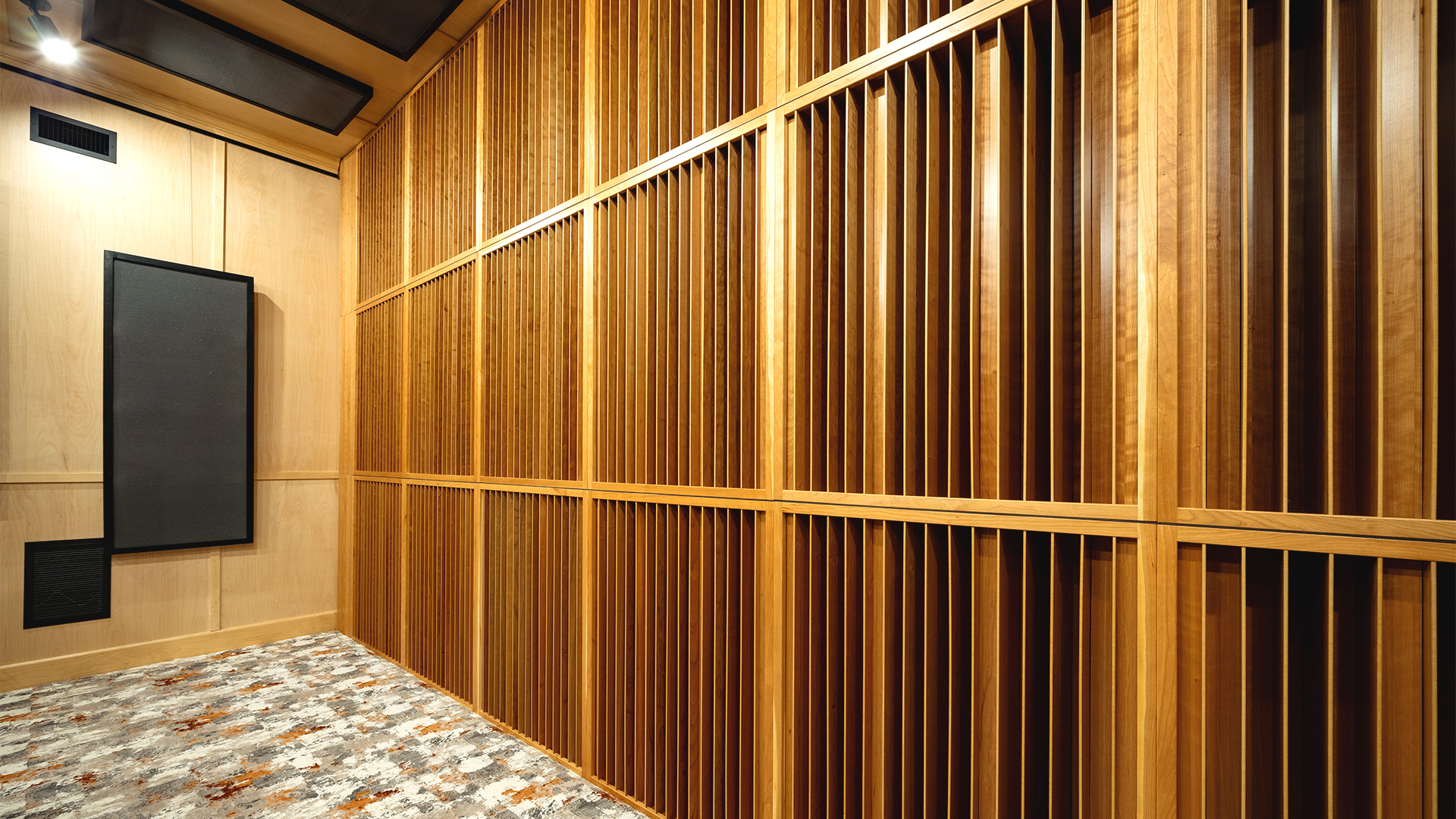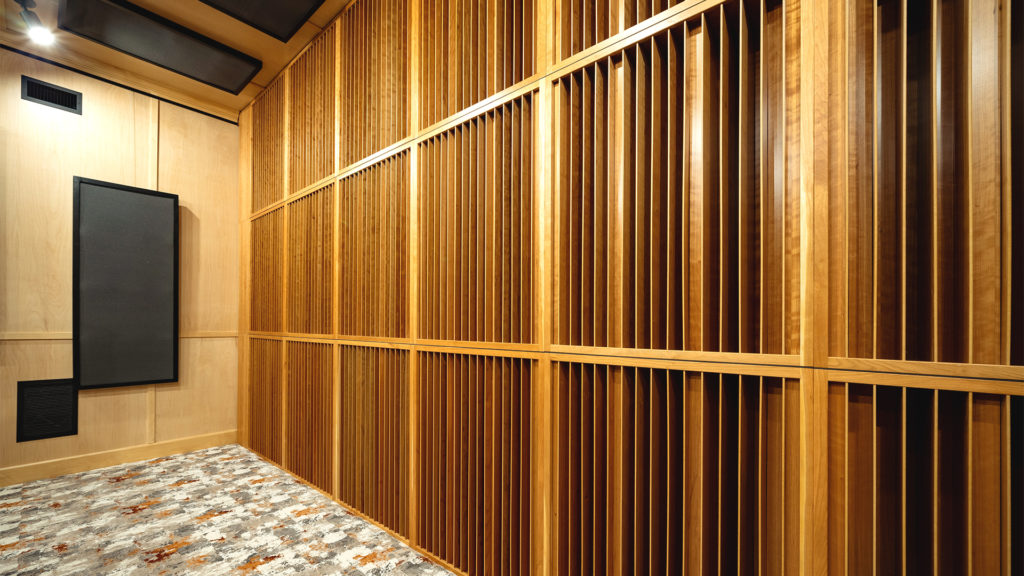
Table of Contents
Introduction
The search term qrd diffuser is a term that stands for quadratic residue diffuser. A qrd diffuser is the most consistent and predictable of all the diffusion technologies. One can choose numerous frequency responses in any qrd sequence to compliment the acoustical objectives of the room you are working in. A qrd diffuser is composed of a series of wells or troughs that have different depths and widths to each well. The depth of each well is based upon quarter wavelength rules.
QRD® Diffusers: Design Based on Half Wavelength and Prime Numbers
The width of each well is based upon half wavelength rules. The deepest well or trough is the lowest frequency the diffuser works at. The well or trough width is the highest frequency the diffuser works at. The frequency response range of a qrd diffuser is calculated using a complex formula which is based upon prime numbers.
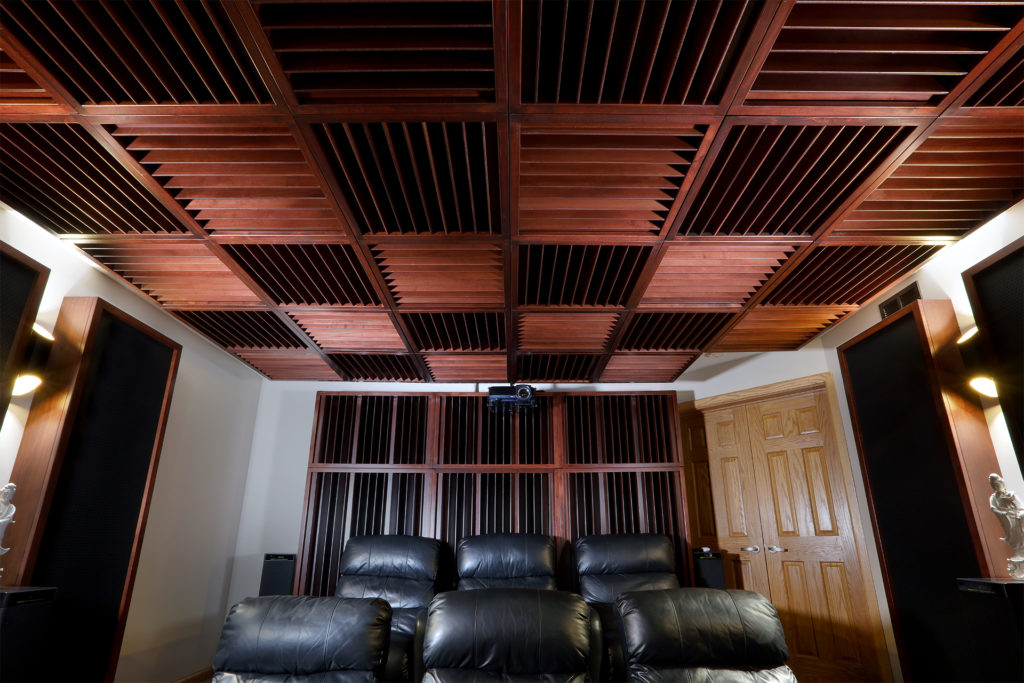
Making Small Rooms Sound Bigger Through Psychocoustics
A qrd or quadratic residue diffuser is an acoustical tool that is designed to make a small room sound larger. It accomplishes this goal by playing a trick on our hearing/brain system. A strong reflection from a room boundary surface is much easier for our hearing brain to localize and determine distance. A qrd diffuser takes this primary reflection and breaks it down into a series of much smaller reflections.
These smaller amounts of reflected energy are much more difficult for the hearing brain to recognize and process. A ceiling height that has the proper qrd sequence across the appropriate amount of surface area that is 8′ high will sound like 12′ with the proper diffusion sequence properly positioned and covering enough surface area to have the proper acoustical impact.
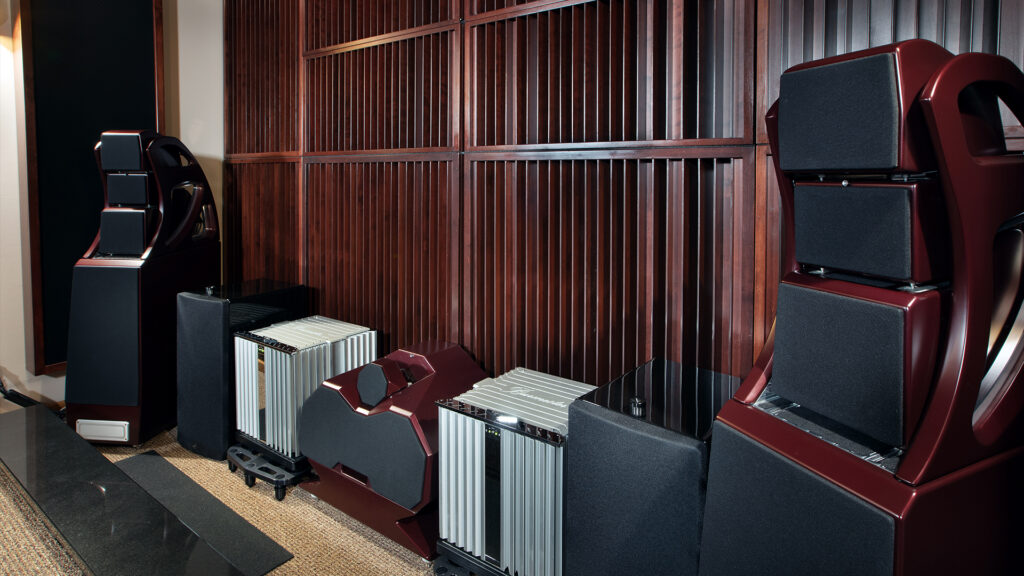
The Importance of Distance in Using QRD® Diffusers for Optimal Acoustic Performance
One of the most critical variables that must be considered is the distance from the diffuser face to the listener’s ears. The distance is critical in order to avoid phase issues. As we discussed, the deepest well in a qrd is the lowest frequency that is diffused with the selected prime number. Most quadratic diffusers work in the 200 hz – 3500 hz. frequency range.
If we have a diffuser that starts its work at 200 hz. we must have enough physical distance between the diffuser’s lowest frequency well for the wavelength to be able to fully form. If we take the speed of sound 1,130 ft./sec. and divide it by the frequency of resonance which is 200 hz. we get a full size waveform travel distance of around 5.5′. If we are using a diffuser whose lower frequency is 200 hz., we must sit at least 6′ from the diffuser so the lowest frequency has enough distance to fully form.
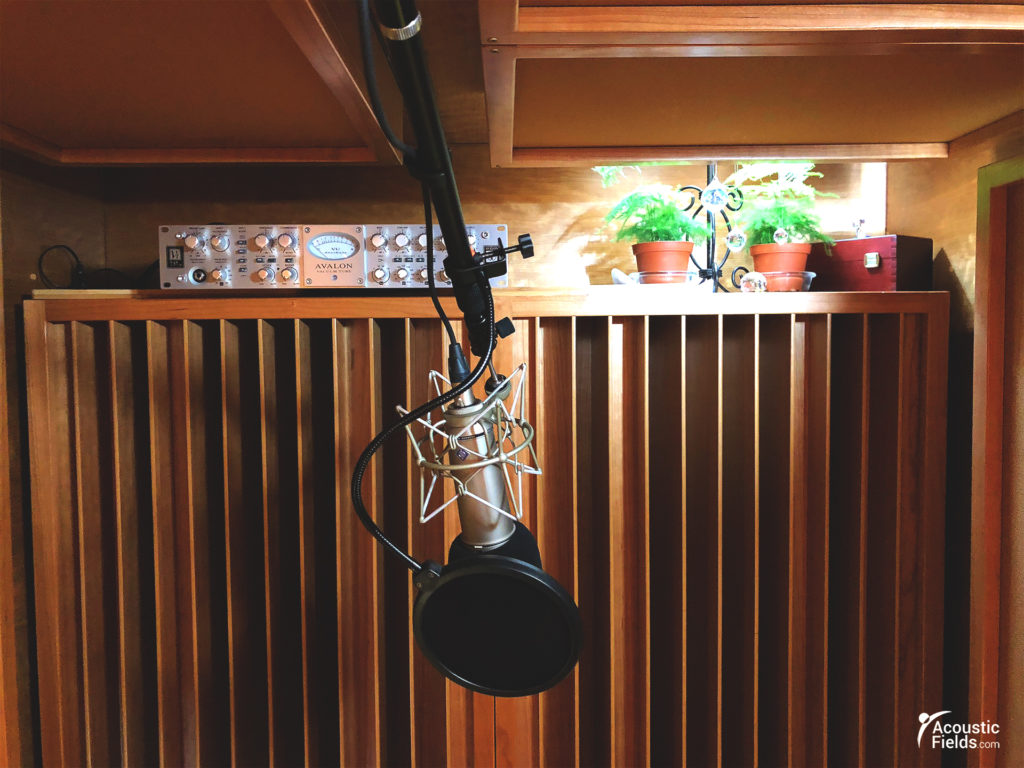
Wood: The Best Material for Building QRD® Diffusers
The best material type to build a qrd diffuser out of is wood. Remember you are diffusing middle frequency energy where the human voice lives. Sound takes on the characteristics of the material type it strikes. If sound energy strikes glass, you get glass sound. If sound strikes wood, you get wood sound. Wood is a material type that is much better at not adding any frequency aberrations to the signal. We have found that cherry wood works the best for middle range energy.
We have tried cherry, maple, oak, and walnut woods in our diffuser builds. The cherry wood produces a smoother tone quality for vocals. The maple came in second. The walnut is a hard wood and tends to make the upper frequencies more brittle. The oak and maple did similar things to the upper frequencies of each diffuser.
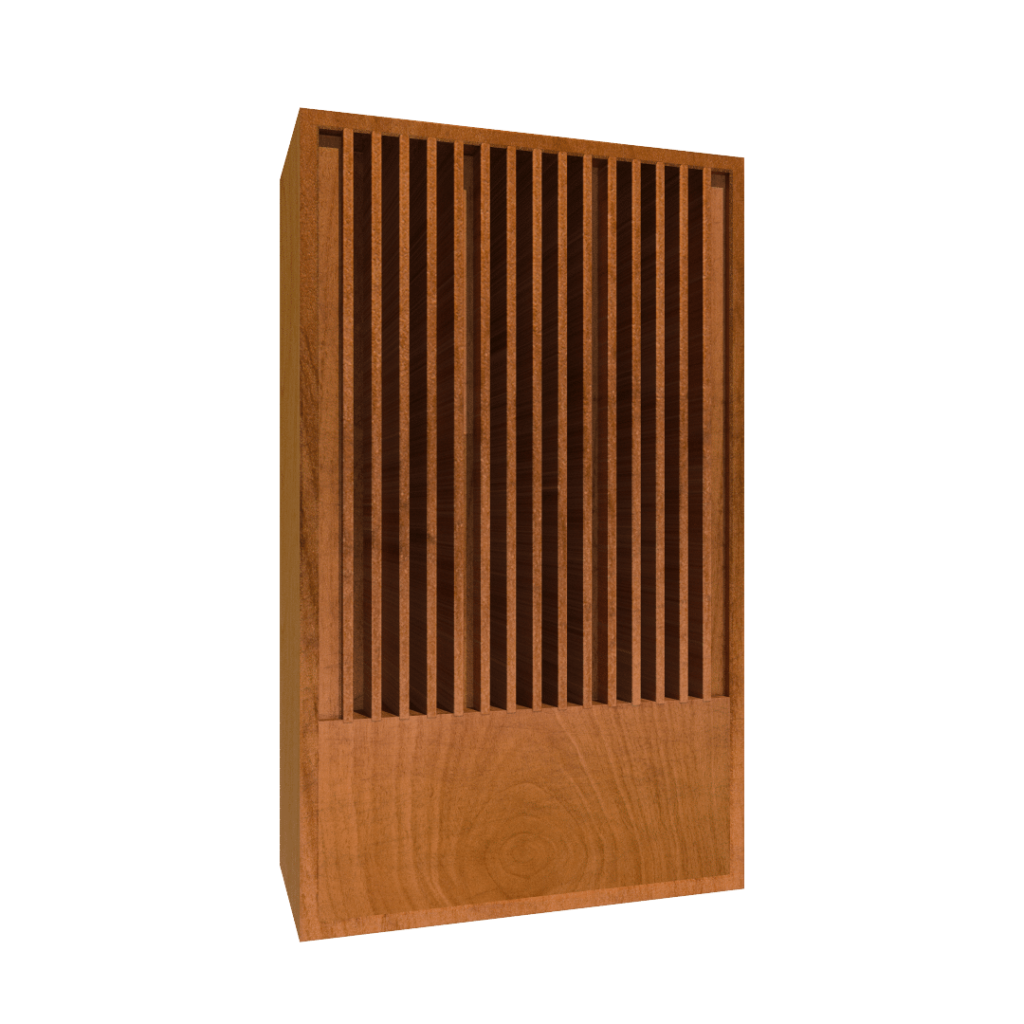
Combining Absorption and Diffusion in Small Room Acoustics with Acoustic Fields QDA Series
All small rooms need absorption and diffusion. The goal is to make a small room sound larger. Lower frequency absorption can take from 12″ – 16″ on each wall surface. A qrd – 13 diffuser is 12″ deep. Placing both of these units on your small room walls would cause you to lose 25″ on each wall surface area. If you have a room with dimensions in the 13′ – 15′ range, giving up that much space on each wall surface area would make the room 11-13′.
With both absorption required in your room, we must have a product that we can use that has both the required frequency response of diffusion along with the proper rates and levels of absorption. At Acoustic Fields, our QDA series of diffusers have both absorption and diffusion all in one unit that is 12 1/2″ deep. We offer a prime number 11, 13, 17, and a 23.
QRD® Diffuser FAQ’s
What is a QRD® diffuser?
A QRD® diffuser, or Quadratic Residue Diffuser, is an acoustical device designed to break down a strong reflection from a room boundary surface into a series of smaller reflections. By doing so, it helps to create the impression of a larger space and improve acoustics within small rooms.
How does a QRD® diffuser work?
A QRD® diffuser works by breaking down strong reflections into a series of smaller reflections that are harder for the hearing brain to recognize and process. This creates the impression of a larger space and improves acoustics within small rooms.
What is the best material for building QRD® diffusers?
Wood is the best material for building QRD® diffusers, as it does not add any frequency aberrations to the signal. Cherry wood is particularly effective for diffusing middle-range energy, while maple and oak are also commonly used.
How far should you sit from a QRD® diffuser for optimal performance?
The distance from the diffuser face to the listener’s ears is critical in order to avoid phase issues. If using a diffuser that starts working at 200 Hz, listeners should sit at least 6′ from the diffuser so that the lowest frequency has enough distance to fully form.
Can QRD® diffusers provide both absorption and diffusion in one unit?
Yes, Acoustic Fields QDA series of diffusers can provide both absorption and diffusion in one unit that is 12 1/2″ deep. These units offer a range of prime numbers, including 11, 13, 17, and 23, and can help to create optimal acoustics within small rooms.


